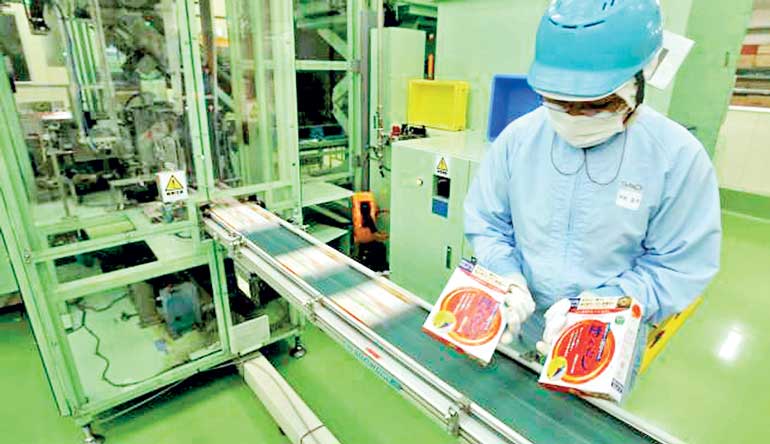Saturday Jan 11, 2025
Saturday Jan 11, 2025
Friday, 31 July 2015 00:00 - - {{hitsCtrl.values.hits}}
 An employee of Ajinomoto Co checks packaging boxes of its Hon-Dashi, or bonito base seasoning, before packing into carton boxes on its packaging line at the company’s Kawasaki factory in Kawasaki, south of Tokyo, Japan, 29 June
An employee of Ajinomoto Co checks packaging boxes of its Hon-Dashi, or bonito base seasoning, before packing into carton boxes on its packaging line at the company’s Kawasaki factory in Kawasaki, south of Tokyo, Japan, 29 June
Japan’s factory output rose modestly in June after a big drop in the prior month, highlighting worries of a second-quarter economic slump as exports weaken and manufacturers are saddled with large inventories.
Analysts expect the economy to bounce modestly in the current quarter, helped by a pick-up in private consumption as household incomes improve, but some warn of a prolonged lull as China’s economic slowdown takes its toll on external demand.
Industrial production rose 0.8% in June from the previous month, trade ministry data showed on Thursday, exceeding a median market forecasts for a 0.3% gain after May’s 2.1% drop.
“You cannot rule out the possibility of output sliding for two straight quarters to September, forcing the economy to stall,” said Koya Miyamae, senior economist at SMBC Nikko Securities. “The main risk is China’s slowdown, which will keep a drag on exports.”
Reflecting expectations of a gradual pick-up in factory activity ahead, manufacturers surveyed by the ministry expect industrial output, which accounts for roughly 18% of Japan’s gross domestic product, to rise 0.5% in July and 2.7% in August.
Still, the underlying weakness in output could reinforce a view that the economy probably slowed sharply in April-June from the prior quarter, or even contracted, keeping the central bank under pressure to deploy fresh monetary stimulus.
The factory data, which is strongly correlated with economic growth, will be closely scrutinised by the Bank of Japan, along with a batch of indicators due on Friday.
The BOJ is widely expected to keep monetary policy steady next week and is in no mood to act any time soon, arguing that the economy will emerge from a soft patch in the current quarter, helping inflation hit its ambitious 2% goal by around September next year.
But some analysts are bracing for fresh BOJ stimulus as early as October, with signs of weakness in the economy adding to doubts whether inflation will accelerate as quickly as the central bank projects.
BOJ board member Koji Ishida signalled his reluctance to top up an already radical stimulus program, though he sounded less convinced about the economy’s recovery prospects.
“There’s a risk the recent softness in exports and output may hurt corporate sentiment just when companies were beginning to turn more aggressive on investment,” he told business leaders in Kyoto, western Japan, on Thursday.